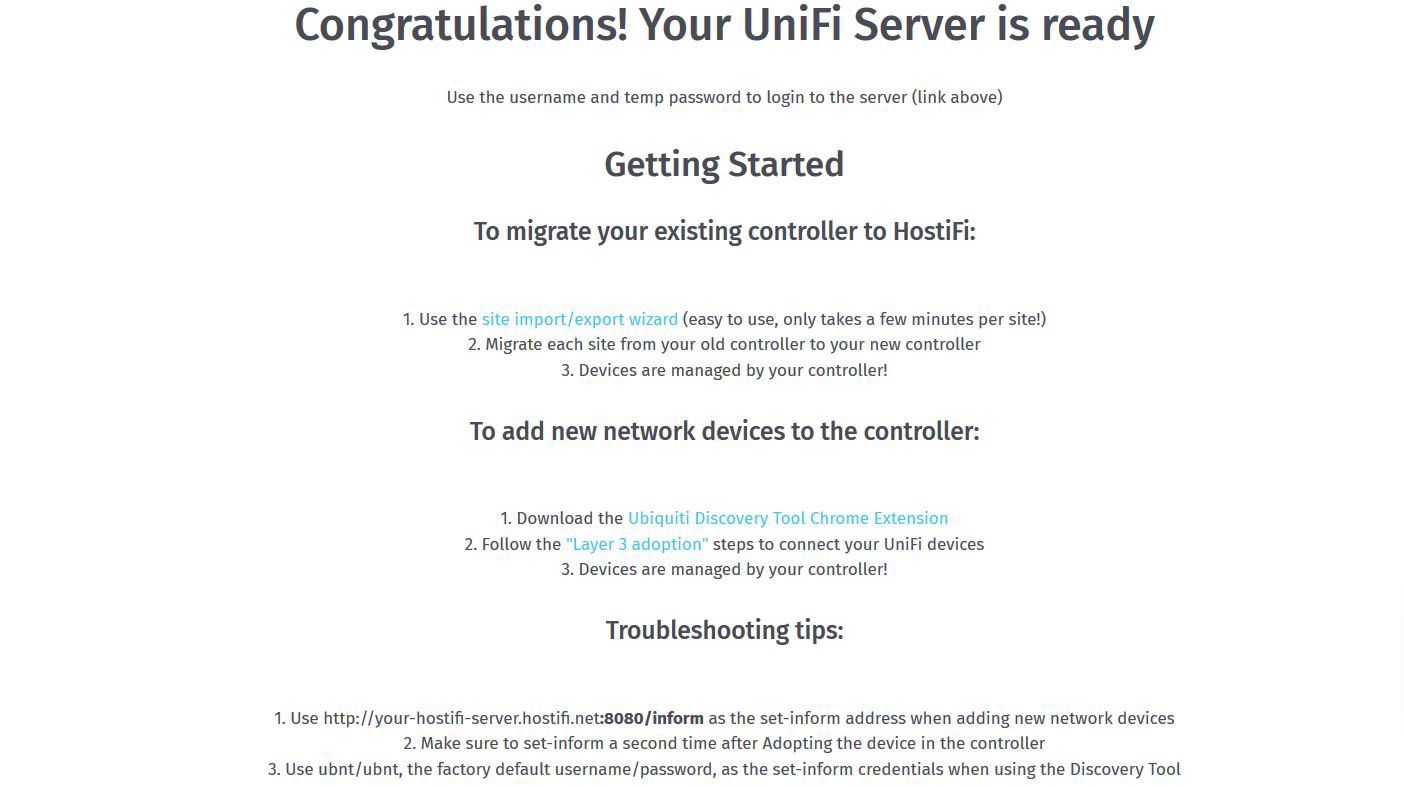My First Micro-SaaS, Reducing churn with proactive support

In this post I discuss how I reduced churn for my first SaaS, a UniFi controller hosting service, by providing a better onboarding experience and creating a script which helped me identify customers who weren’t using the product in order to be able to provide proactive support to them.
From launch in May 2018 to now (October 2018), HostiFi had 85 customers sign up. Only 9 have canceled since then.
Something interesting about that is, of those 9 cancellations, 6 had signed up in June, my first month after launch.
I think there’s a reason for that. From launch until around the end of June, I had almost no onboarding system in place, and I hadn’t developed a system for providing proactive support.
Launch day
If you signed up for HostiFi on launch day, your UniFi controller would be created, and you would find the URL and credentials to UniFi in your dashboard.

There were no instructions on how to get started.
I made the assumption that most people would know what to do. If they didn’t they would Google it. If that didn’t work they would just email me and I’d help them out.
My first churn

I learned a big lesson when my very first customer churned shortly after signing up. I reached out to ask for feedback, and he replied.
As it turns out, my assumptions had been wrong. People expected some instructions on how to get started!
Early June: Basic onboarding instructions added

I wrote some basic instructions on how to get started adding a new device or migrating from an existing controller and updated the user dashboard.
I also began reaching out to every customer right away after they signed up and letting them know I am here to help them get started.
Customers continued to churn early on after that, and I didn’t always get feedback on why. One accidentally signed up, one didn’t need it for a few months but might come back, one said it was too expensive.
But I wondered about the others who had not given feedback. Maybe they got stuck in the onboarding process too, even though I had provided basic instructions, and offered to help.
Late June: Proactive support automation created

On June 28, I finished writing a script I had been working on I named “device_site_counter.py” and made a cron job to run it every 15 minutes.
I think this 385 line Python script has had the biggest impact on reducing churn for HostiFi.
The idea I had was if I can somehow know who has successfully onboarded and who hasn’t, I can focus my attention on following up with those who might be stuck.
In order to do that, the metric I used is devices. If a customer signs up and they’re able to successfully add devices to their controller, more than likely they’re not going to churn. They’re using the product, and getting value.
But if a customer signs up and a day goes by and they still haven’t added a device, then they aren’t using it. They’re not getting any value. They’re at a high risk for churning. No one likes paying for things they don’t use.
So I reach out to them and ask if they need help.
If they don’t reply, I keep following up, at least once a week. I’m not annoying about it, sometimes they say to check-in with them later, or they’re waiting for something, so I’ll wait a bit longer before following up again.
But usually, people are just busy. They meant to use the product, but they got stuck, and then they didn’t get back around to working on it, so following up multiple times has been working, and I’ve helped onboard many customers thanks to the script.
Closing thoughts
Every single customer matters. It’s very important that when we do get a customer, they have an awesome experience.
We try to provide that with a clear and easy onboarding experience, and proactive support.
If you are launching a SaaS product, try to think of a metric you can track to see who is getting value and who isn’t, in order to create your own proactive support system with some level of automation.
Those are the two best ways to reduce churn that I’ve found so far.
Improving the onboarding experience is not something that I’m done with either, it’s a continual process. I’m actually revamping it right now with step-by-step YouTube videos for each common onboarding and support related task.
